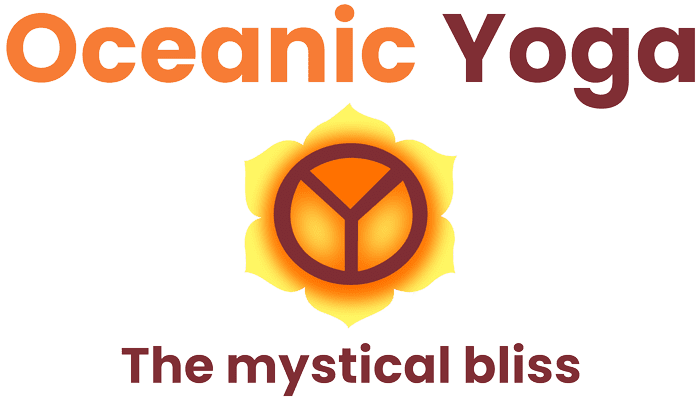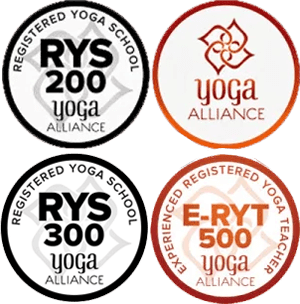Pranayama
What is Pranayama?
Prana is a vital force in our bodies. It pulsates within every cell, every molecule of DNA, every gland and organ pulsates with prana. When the flow of prana becomes less in particular area of the body then body becomes ill. To maintain the flow of the prana in the body practice of yoga and meditation is important. The word Pranayama is comprised of two roots Prana +Ayama. Prana means vital energy Ayama means expansion. pranayama practice means expansion of Prana. Pranyama purifies all the energy channels in the body. Every Pranayama techniques have unique benefits on the body and mind. There are four aspects of Pranayama.
- Pooraka –inhalation
- Rechaka –exhalation
- Antarkumbhaka-internal breathes retention
- Bahir kumbhaka –external breath retention.
There are 8 pranayamas prescribed in the ancient Hatha texts of Hatha Pradipika:
1. Ujayi
Audible warrior breath. Inhale for four counts through both nostrils, exhale for 8 counts through the left nostril by closing off the right nostril with the right thumb. Do 10 rounds without retention.
2. Surya bhedana (The Sun Breath) (avoid during female monthly cycle)
Inhale through the right nostril by closing off the left nostril with right ring finger for 4 counts, exhale for 8 counts by closing off the right nostril with the right thumb. Chandra Bhedana: Moon breath (to be used while on the female monthly cycle) Inhale through the left nostril by closing off the right nostril with right thumb for 4 counts, exhale for 8counts by closing off the left nostril with the right ring finger. After adequate practice with the breath ratio of 1 inhale: 2exhale. Bring in retention as 1 inhale: 1 retention: 2exhale. Apply retention by closing off both nostrils at the end of an inhale, then drop chin to chest, then start counting, lift the chin, release the nostril for the exhale.
3. Sitali
Cooling breath, Roll the tongue into a tube. Stick the tongue out and inhale for 4 counts through the tube. Exhale with an audible breath through the nostrils for a count of 8. One can do this breath without retention with a ratio of 1inhale:2 exhale. After adequate practice with the breath ratio of 1 inhale: 2exhale. Bring in retention as 1 inhale: 1 retention: 2exhale. Apply retention by closing off both nostrils at the end of an inhale, then drop chin to chest, then start counting, lift the chin, release the nostril for the exhale.
4. Sitkari
Can be done if one cannot roll their tongue into a tube. Place top row of teeth on top of bottom teeth and place the tongue against the back of the top row of teeth. Breathe in for a count of4 and exhale with an audible breath through the nostrils for a count of 8. One can do this breath without retention with a ratio of 1inhale:2 exhale. After adequate practice with the breath ratio of 1 inhale: 2exhale. Bring in retention as 1 inhale: 1 retention: 2exhale. Apply retention by closing off both nostrils at the end of an inhale, then drop chin to chest, then start counting, lift the chin, release the nostril for the exhale.
5. Brahmari
The Humming breath. Sit up straight in a comfortable position, with closed eyes and mouth. Inhale with an audible breath and exhale by with a humming sound that resonates in the entire scull cavity. Repeat this breath for 11 rounds.
6. Bhastrika
This is an advanced pranayama in yoga that needs to be prescribed by an experienced teacher to an advanced practitioner. (avoid during female monthly cycle)
7. Murcha
This is an advanced pranayama that needs to be prescribed by an experienced teacher to an advanced practitioner
8. Plavini
This is an advanced curative pranayama breathing that needs to be prescribed by an experienced teacher
Pranayama – physiological view
Annamaya kosha (physical body)
- Diet.
- Oxygen.
- Life means using of energy at every movement.
- Actually entire life is oxidization of cells at every moment
For purification of all the nadis pranayama is essential practice in hathayoga.
There are 3 most imporatant nadis ( energy channel)
- ida
- pingala
- susumna
Thus disease is the result of low vital energy. Precaution and preparation for Pranayama
- during pranayama practice one should understand own limitation and do with utmost care. Otherwise it can harm practitioner himself.
- for first 3 month just practice alternate nostril breathing and reach upto 12:24 inhalation and exhalation ratio
- one can start practice holding period with 6:24:12 and gradually every week increase one matra.
- one can start with 10 round and every day increase one orund
- one should consume lots of milk and ghee during pranayama practice
- one must take only satvik diet during pranayama practice
- pranayama practice increase heat in your body so avoid any kind of spicy , oily and non-veg diet..
- cleansing process are imperative before practicing actual pranayama.
DIFFERENCE BETWEEN UNHEALTHY AND HEALTHY PERSON
According to prana.
- In Unhealthy -Low vital energy.
- In healthy-Sufficient vital energy.
Physiological view
- Breathing Technique.
- Modulation of Nervous system
- Psychophysiological stabilization.
ON THE BASIS OF BREATH
Breath-Inhalation + Exhalation.
Usual quite breathing
- 15 per min.
- One breath in 4 seconds.
In pranayama- 1 or 2 per min.
This is the expansion of breath.
Gativiccheda-To alter the movement (Patanjali)
PRANAYAMA IN PHYSIOLOGICAL AND PSYCHO-SPIRITUAL VIEW
- Emotional responses.
- Pain, pleasure, phobia centers.
- More get activated during stress.
- Emotional centers should be under control of intellectual centers.
- But in usual life it does not happen.
Cerebral/cortical part- Intellectual center
- Frontal lobe- thinking, intelligence
- Parietal lobe- perception of space, time
- Temporal lobe- speech, hearing
- Occipital lobe- vision, balance
- Controlling vital energy through controlling breath.
- Conscious control over breath.
- Maintaining homeostasis through controlling breath.
- Control of emotions through control over breath.
- Foundation of inner consciousness.
- Purification of body and mind.
- Training of mind to control body processes and their rhythm.
Note- for first 3 month only practice alternate nostril breathing and reach upto 12 inhalation and 24 exhalation. Than only one should go for this method
- inhale through left nostril upto 16 matra
- during inhalation adopt mula- bandha
- hold the breath for 64
- when you start the holding the breath adopt jalanahdar and jihava bandh first
- also adopt uddiyana bandh during kumbhak phase ( holding phase)
- realease jalandhar bandh and jihava bandh
- exhale upto 32 matra
- also release uddiyana bandh.
- matra- is more than one second.
EFFECT OF PRANAYAMA
- Lightness.
- Health.
- Decreased passion.
- Good skin luster.
- Good voice.
- Less waste materials.
- Production of alpha waves.
- These waves indicates the rest.
- This indicates the decreased irritability of cells.
- Also this indicates the rhythm of the cells.
- WHAT HAPPENS DURING PRANAYAMA ?
- The whole consciousness comes on breath.
- Divertion of mind.
- Decrease in sympathetic activity.
- Increased CO2 level in blood but sufficient oxygen to cells. Reduced irritability of the cells in cortex.
- Increased parasympathetic activity.
- SUFFICIENT BLOOD SUPPLY TO THE BRAIN
- In the brain ,many capillaries lie dormant, until more blood supply is required.
Mild increased CO2 level stimulates brains capillaries to dilate, thus improved circulation. - This effect is beneficial up to certain extent only.
Excess CO2 level produces -headache, nausea, vomiting.
- Suryabhedana
- Ujjayi
- Sitkari
- Shitali
- Bhastrika
- Bhramari
- Murcha
- plavini
Wasting of energy through various ways.
- Stress.
- Unnessesory communications.
- Conflit.
- Passionacy.
- Puraka = Controlled inhalation
- Kumbhaka = Controlled Retention
- Rechaka = Controlled exhalation
- one should practice 80 rounds for highest benefit
- the ratio should be 1:4:2 for inhalation: retention: exhalation
- There are 3 levelsof pranayama 12: 48:24, 16:64:32, 20:80:40
Usual breathing is semi-voluntary.
We are not aware about breathing during- working, speaking, hearing ,watching ,writing, sleeping.
Usual breathing is regulated by medulla oblongata and pons.
In pranayama-Work(pranayama in yoga) of cerebral cortex.
VOLUNTARY REGULATION OF BREATH
- Rate.
- Depth.
- Holding.
- Narrowing the paths.
- Specific sounds.
CORTICAL ACTIVATION
Nasal wall-
Upper 1/3-Directly connected to cortex.
Lower 2/3-Connected to midbrain.
Slow and expanded breath gives more time for the communication of nerve fibers and air.
- Relaxed and Rhythmic brain enhances this secretion.
- Neurotransmitter which relieves pain.
- Also responsible for enhancing memory and consciousness.
- Which increase rest and calmness
- Anulom vilom-Nasal cavity.
- Ujjayi-Larynx.
- Shitali and Sitkari-mouth cavity.
- Bhramari-Pharynx and larynx.
INCREASING THE PARASYMPATHETIC WORK
Anulom and Vilom-
Facial.
Ujjayi and Bhramari-
Glossopharyngeal and Vagus.
Shitali and Sitkari-
Facial and Glossopharyngeal.
NITRIC OXIDE IN BHRAMARI
- it produces nitric oxide 15 times greater than the usual, in the sinuses of the skull.
- Importance of the molecule-
- Anti-stress effect by inhibiting the release of catecholamines.
- Vasodilation.
- Angiogenesis.
- Muscle relaxant.
EXERCISE OF CEREBELLUM
Bandha is the skillful contraction of the muscles.
This is the work of cerebellum.
- Rest. (Relaxation)
- Rhythm.
- Repair.
- Rejuvenation.
Plavini Pranayam
Plavini
- Drink the air through mouth
- When you have feeling entire stomach is filled
- Take deep inhalation through nostril
- Practice kumbhak
- Exhale the air completely
- removes many disorders of stomach
- it gives ability to float on the water
SEQUENCE OF THE EFFECT
- Rest. (Relaxation)
- Rhythm.
- Repair.
- Rejuvenation.
Suryabhedana Pranayam
Technique
- Adopt Vjrasana or Sukhasana.
- Inhale through the right nostril
- Try to hold after adopting required bandha
- Exhle through the left nostril.
- Repeat it in the same way again.
Benefit
- Removes stomach worms
- Purifies the body
- Increase the heat
- Removes cough and cold
Ujjayi Pranayam
Technique
- Inhale through both the nostrils while contracting glottis and fill the air up to the throat
- Hold the breath and practice Kumbhaka
- Exhale with contracted glottis it out through left nostril
Benefit
- Removes phlegm
- Diseases due to excess of phlegm in the heart and throat do not persist
- Disorder of stomach known as dropsy is removed
- Digestive fire is activated
Sitkari Pranayam
Technique
- Take a deep yawn and fill inside with air
- Retain for sometime
- Exhale through the mouth.
- Again draw the air in through the mouth with the sound ‘SI, SI’
- Retain it inside i.e.do Kumbhaka
- Exhale through both the nostrils.
Benefit
- Improves facial beauty
- No false hunger or sleep will disturb
- Laziness will not possess, always feel alert.
- Get freedom from diseases
- This is king among all the Kumbhakas
Shitali Pranayam
Technique
- Tongue should be twisted and air should be inhaled through the mouth via twisted tongue.
- Practice Kumbhaka
- Exhale through both the nostrils
Benefit
- Troubles of stomach ache, spleen and fever is removed.
- Grey hair becomes black
- Hunger and thirst remain normal
- Body becomes new just as snake sheds the old skin.
Bhastrika Pranayam
Technique
- Practice Kapalabhati till you get tired
- Immediately do Puraka with right nostril
- Practice Kumbhaka and gaze at the tip of nose.
- Exhale through the left nostril
Benefit
- Removes excess of bile, phlegm and gases
- Increases digestive fire
- It opens up three knots
- It awakens Kundalini
Murcha Pranayam
Technique
- Draw in air through nostrils imitating the continuous sound of sobbing as if it is raining
- Hold the breath with Jalandhara bandha
- Exhale slowly maintaining the Jalandhara Bandha.
Benefit
- Gives pleasant sensation
- It alter level of consciousness. So it was used to go into samadhi



